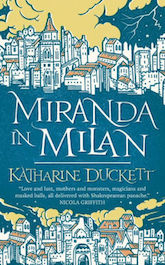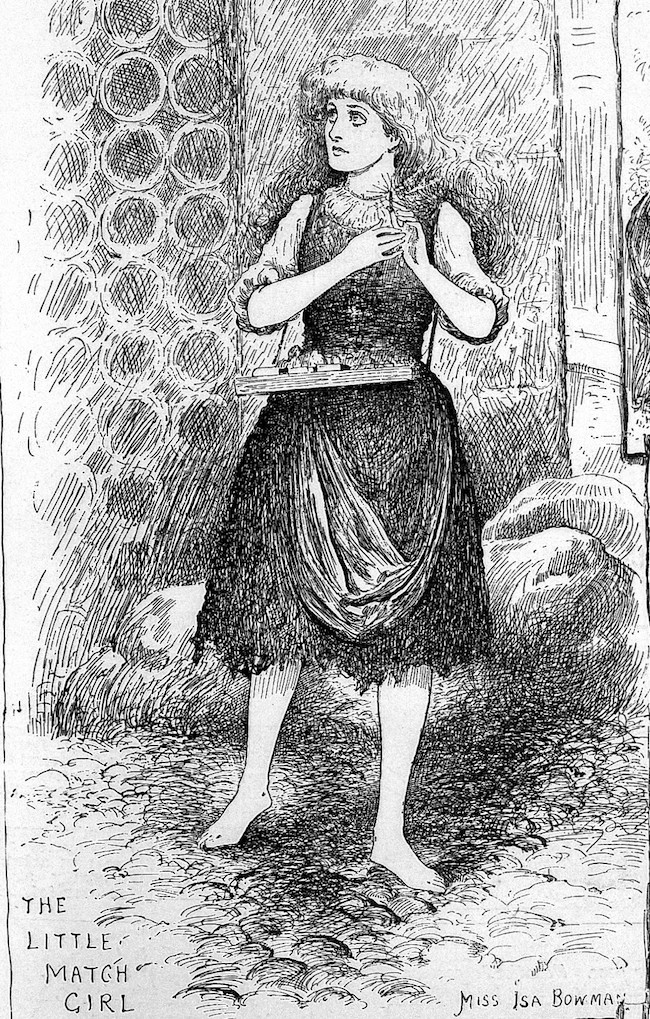Read any collection of Hans Christian Andersen’s fairy tales—any—and one thing becomes immediately apparent:
Dude had a really strange, unhealthy obsession with feet.
Especially the feet of little girls.
Especially especially the feet of poverty stricken little girls.
Even in stories that—at least on the surface—have nothing to do with footwear, shoes, or even feet at all.
Seriously. It pops up in tales like “The Red Shoes,” a tale of a little girl who spends—in Andersen’s opinion, at least—entirely too much time thinking about shoes AND DIES; in tales like “The Little Mermaid,” where a girl is punished with excessively painful feet AND DIES after falling in love and wanting something different in life; in tales like “The Little Girl Who Trod on a Loaf,” where a girl is literally sent to hell for trying to protect her nice shoes from getting muddy (okay, she does this by using a nice loaf of bread meant for her mother to eat as a sort of steppingstone, which, since her mother is poor and could actually use the bread, is not great, but, that said, given that her mother can’t afford to buy bread, I think we can take it as a given that her mother also can’t afford to buy the girl nice shoes, which is to say, the attempt to save the shoes? Understandable); and in tales like “The Little Match Girl,” where a little girl loses her shoes and THEN HER FEET FREEZE OVER AND—NOT TO SHOCK ANYONE—SHE DIES, which might explain why the other little girls were so obsessed with taking care of their feet, Andersen!
Even little Gerda, heroine of The Snow Queen, whose chief antagonist hardly seems to be a foot fetishist, finds herself the proud owner of a lovely pair of boots—boots she later loses, leaving her feet frozen in the snow.
I could go on. The point is, I think the ghost of Andersen and I may need to have a talk.
A talk where I, at least, will be wearing some nice shoes.
Red velvet shoes, maybe. With soles made of white bread and a touch of iron.
…Andersen was, granted, the son of a cobbler, which undoubtedly explains at least part of this obsession with shoes. He also grew up in the days before mass produced factory shoes—that is, at a time when most people, other than members of the aristocracy, made do with at most one pair of shoes or boots per year, if any. This, in part, explains his focus on footwear.
It’s also highly likely that Andersen, all too familiar with poverty, wanted to try to pass at least some of that familiarity on to his readers, many of whom came from the aristocracy, and were at least in a position to dispense charity—and decent shoes. “The Little Match Girl,” for instance, definitely falls into this category: Written as a Christmas/New Year’s story, the tale was in part designed to draw attention to the plight of children so poor that they had to turn to “selling matches” in order to eat. I have “selling matches” in quotes because the point, from the children’s point of view, was to pretend to be selling something—outright begging was illegal, selling something on the streets was not. Thus, cheap, handmade “matches” that might or not be capable of starting a fire, but were capable of turning an illegal activity into a marginally acceptable job, of sorts, one that kept the little match girl alive for just a few more years.
Admittedly, the pathos of “The Little Match Girl” is somewhat undercut by its ending, where the little girl ascends into heaven with her grandmother. Andersen may even have intended this to be read as a happy ending—he was, after all a devout Christian, and I suspect he wanted to reassure young readers that the little, innocent match girl, who never does anything wrong in the story, would get a happy ending despite, you know, dying. And given the rest of the tale, which strongly hints that the girl hasn’t just lost her shoes, but is also suffering from starvation and physical abuse, reading this as a happy ending may not be entirely without merit.
Leading, I suppose, to the conclusion that Andersen felt—or is at least suggesting here—that if we really want to help out extremely poor children, the best thing we can do for them is to let them starve and freeze to death, before they can obtain nice shoes that will occupy their thoughts and lead them straight to hell.
Probably not what Andersen actually meant, but given the contrasting fates and punishments of the girls in “The Red Shoes,” “The Girl Who Trod on a Loaf,” and “The Little Match Girl,” a rather hard thought to avoid.
To be fair, however, these tales do feature another major difference: The girls in the first two tales, desperate to save their nice shoes, have been rescued from poverty by kindly people, and are in a sense punished for not being grateful enough for that rescue. The little match girl, in stark contrast, is completely innocent—and spends the entire tale suffering despite that. The only entities who do rescue her are hallucinations, ghosts, and finally, the afterlife.
Here, Andersen is working within a 19th century literary tradition that emphasized the benefits of poverty—sure, it could end up killing you, but by preventing you from getting tempted by such things as, you know, shoes, it makes it easier for you to focus on spiritual things, important for your journey to the afterlife. It should be noted that many 19th century authors did not share this optimistic view on poverty, taking quite the opposite approach, but as someone who shifted from the lower classes to the upper classes thanks to his talents, it is perhaps not surprising to see Andersen taking a somewhat jaundiced view of the ethics, or at least the ethical motivations, of the upper classes and social climbers, whatever footwear they wore.
Which brings me back to the shoes, and feet, and Andersen’s obsession with these.
Buy the Book


Miranda in Milan
After all, other fairy tale writers and collectors knew cobblers, and also lived and worked before the age of mass produced factory shoes. Even some of the French salon fairy tale writers—not noted for their interest in or knowledge of the working classes—had periods where they were unable to indulge in fine footwear, or even coarse footwear. Several fairy tales mention or center on cobblers, and footwear is another frequent motif, with Cinderella’s presumably painful glass slippers as the most prominent but hardly the only example. Fairies frequently don those very useful seven league boots (why Nike and Adidas haven’t gotten right on developing these remains a major mystery) or order protagonists to wear iron shoes (Nike and Adidas continuing to avoid these, however, is perfectly understandable).
But no other fairy tale writer or collector had anything near Andersen’s obsession with footwear and frozen feet. It leads me to wonder if Andersen suffered from frostbite as a child (given his precarious financial upbringing, this would not be completely shocking) and never emotionally recovered from this, or if he spent the rest of his life having nightmares about cobblers (also possible) and never emotionally recovered from that, either. Or if he just had a serious, serious thing for feet.
I can’t explain it. But having noticed it, I can’t unnotice it.
And thus, I chose to inflict this observation on you.
You’re welcome.
Image: Wellcome Library, London. Little match-girl from Hans Christian Andersen. Illustrated London News Published: 1886. Copyrighted work available under Creative Commons Attribution only license CC BY 4.0
Mari Ness lives in central Florida.











As I understand it in the original fairy tale Cinderella’s footwear was a cozy and stylish pair of ‘vaire’ or fur slippers. Somewhere along the way ‘vaire’ became ‘verre’ and in English glass.
Shoes do seem to be a fairytale and mythological obsession, probably because they were back in the day a big ticket item and very necessary. HCA, as we have all noticed, had issues.
Terry Pratchett explained the problem with seven-league boots.
Iron shoes may be for horses, but steel is used for shoes that protect from more than cold. https://en.wikipedia.org/wiki/Steel-toe_boot
@2, unacceptable groinal strain.
This was hilarious, thank you. Seems logical that the son of a cobbler would indeed have a bit of a foot/shoe obsession and perhaps, wanting to be a writer instead of taking on the family trade, he may have been irked by people always needing shoes as he had no desire to supply them. Interesting though that all the shoeless victims are female. Did little boys never lose their shoes? Having a son, I sincerely doubt that. BTW I once heard that in the original Grimm Cinderella, the step sisters cut off her feet so she couldn’t put on the slipper. Horrid.
The Girl Who Trod on a Loaf gave me nightmares about sinking into mud when I was a child.
I like Pratchett’s take on the Little Match Girl – in Hogfather, Death (disguised as the Hogfather for reasons of plot) rescues her and hands her over to the watch to be taken somewhere warm where she will be looked after, because “what better present than a future”.
“After a while, some angels turned up in the alley, but Albert threw snowballs at them until they went away”.
And if he did have some sort of obsession with feet, it would still be the least odd thing about Hans Christian Andersen.
@5/Susan James: “I once heard that in the original Grimm Cinderella, the step sisters cut off her feet so she couldn’t put on the slipper.”
No, they didn’t. They cut off parts of their own feet to make the slipper fit, and the prince fell for it, twice. But Cinderella’s friends, the doves, pointed out to him that there was blood in the shoe, so he went back twice and tried the next sister.
One of my favorite Harry Potter fanfics is the still-ongoing “Muggle Fairy Tales Are Mad.” The premise: during the Horcrux hunt (before the point where Ron storms out), Hermione starts telling the boys Muggle fairy tales to pass the time. Neither Harry nor Ron is familiar with most of them, so it becomes both amusing and informative, with Ron pointing out the various illogicalities. Often, they can relate the stories to their present situation, or find hidden wizarding elements in them which hint that some of the wizarding world’s knowledge may have seeped into them.
One thing that Ron keeps pointing out is “this Andersen guy’s thing about feet.” :-)